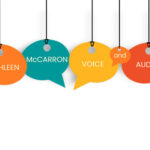People who have a medical condition or disability don’t always have the same online experience as someone who doesn’t.
But what can be done to help people in this position? And what sanctions are currently in place to ensure everyone is included? Let’s get a better understanding of website accessibility as a whole.
What is website accessibility and why do you need it?
Website accessibility is the practice of creating a web page which can be used by anyone, regardless of their ability or condition.
Accessibility ensures a person will be able to perceive, navigate and even contribute to the web. There are a number of disabilities which fall into the bracket of needing website accessibility assistance. Some of the most prevalent include:
Auditory
These are issues with hearing audio footage. This is a particular problem on websites which primarily use video content.
Cognitive
This is when someone has a mental condition which prevents them from fully understanding what they’re reading.
Visual
Having a visual impairment makes it incredibly tough to use the internet. After all, the majority of content is created with the able-sighted in mind.
Neurological
These are diseases caused by the brain which result in you having limited control over your nervous system. Parkinson’s is arguably the most notable example of this.
Speech
The inability to properly communicate could cause problems in an age where voice commands are becoming increasingly popular.
Aside from these demographics, website accessibility can also benefit people who haven’t got a disability.
This includes:
Elderly internet users
This demographic are characteristically unfamiliar with using modern technology. They might need things simplified in order to get the most out of a website.
Temporarily disabled users
Not every disability is for life. A broken arm for instance would seriously impact your ability to scroll the internet. Even having a cold can affect our cognitive abilities.
Restricted internet users
Someone who has limited internet connectivity, due to a lack of bandwidth, might need things made as accessible as possible in order to accommodate for a lack of functionality.
Why do we need website accessibility?
The UN defines access to the web as a basic human right for someone with a disability.
Being able to use the internet allows a person to have better access to:
- Educational resources
- Chances of employment
- Communication channels with the government
- Other people in their community with a disability
While 78% of disabled adults currently get access to the web on a regular basis, there’s still nearly a quarter who don’t.
It’s particularly important for people living in rural areas or developing countries to have a connection with other people in a similar situation to themselves.
Web content accessibility guidelines
Web content accessibility guidelines (WCAG) have gone through several iterations since their inception in 2008. The latest version is WCAG 2.1, which built on all the elements of past versions, with the addition of focus on mobile.
Rather than focusing on technologies, WCAG emphasises the need for principles to be at the forefront of design. This was done in order to ensure all disabilities were catered for. The four core principles are:
- Perceivable – Operable
- Understandable
- Robust
Guest Post by https://yoyodesign.com/
You can read the full article here: https://yoyodesign.com/accessibility-resource/




